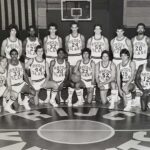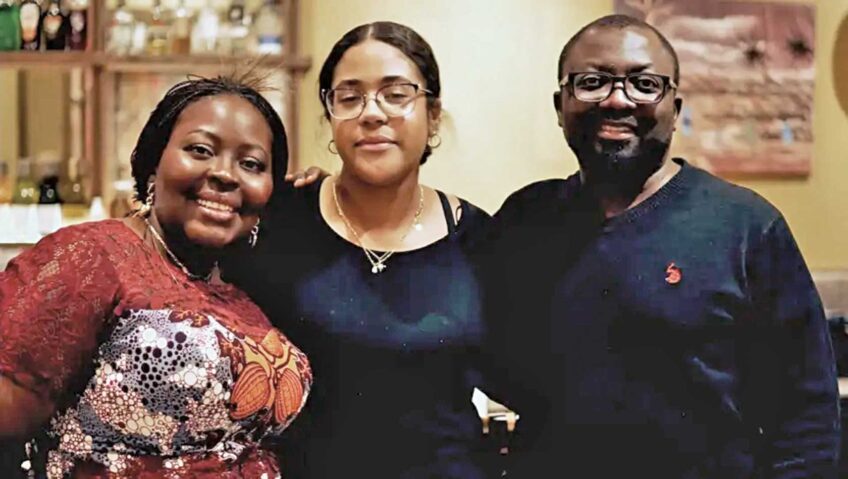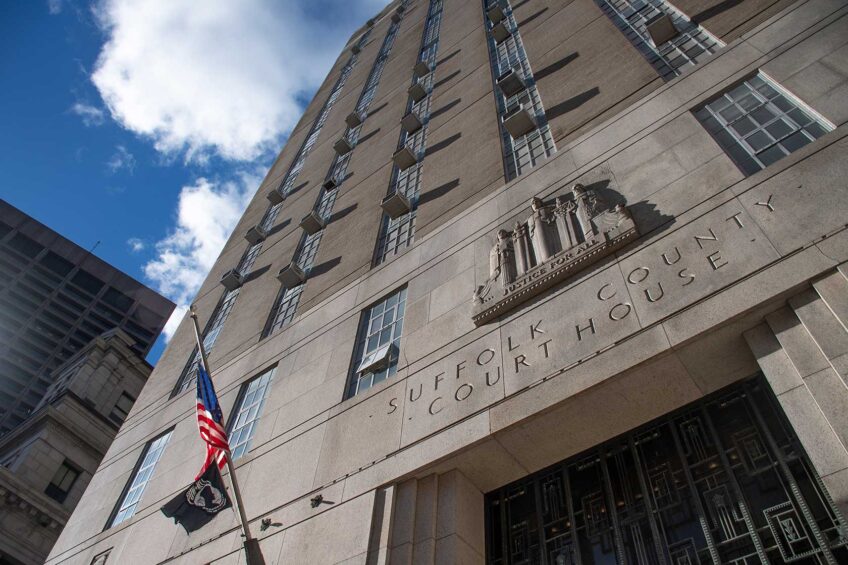

Author: Kathyann HartAt the Oct. 4 Roxbury Open Studios, artist Napoleon Jones-Henderson (right), whose weavings and mixed-media pieces reflected the African American jazz tradition, discussed his work with ArtWalk attendee Michael Kennedy.
A series of guided walking tours are helping make city residents aware of Roxbury’s past while at the same time showcasing the neighborhood’s present-day pride.
Roxbury has “wonderful things people haven’t had a chance to know about,” according to Marcia Butman, executive director of Discover Roxbury, the organization behind the tours. “This is a chance for others to expand their horizons beyond the headlines that jump out at them, and discover the many stores, restaurants and cultural institutions in the area.”
The organization’s fall tour schedule includes a variety of cultural offerings, ranging from a “Roxbury media tour” held last Saturday spotlighting community radio and television outlets to a December retail trip through a number of local, independently owned stores for holiday shopping.
Discover Roxbury co-hosted a guided “ArtWalk” tour of last month’s 10th annual Roxbury Open Studios. Led by Candelaria Silva, former director of Arts, Culture and Trade (ACT) Roxbury, tour visitors ambled up hills and past gardens, making stops at local landmarks and homes to explore a rich array of textile work, sculpture, painting and photography by Roxbury artists.
“Roxbury Open Studios is a great opportunity to see the vibrancy and richness of what’s here,” said Butman.
The three-hour stroll also revealed the little-known history of a neighborhood.
Known today by many as Fort Hill, the area once called Highland Park is rich with a history that might be unfamiliar to many Bostonians. For centuries, the seldom-trod triangle up the hill from Roxbury Community College — framed by Malcolm X Boulevard to the north, Columbus Avenue to the east and Washington Street to the west — has been home to people and events that shaped the development of an American city.
With a clear view of the Back Bay in the background, Highland Park hosts landmarks dating back to the 1600s and the Revolutionary War, as well as the hilltop residence of 19th-century abolitionist William Lloyd Garrison, a national landmark. The neighborhood has also borne witness to some difficult periods in Boston’s past, evidenced in the blight left over from the urban renewal projects of the 1960s, and the arson and illegal dumping from outsiders that plagued the area during the ’70s.






